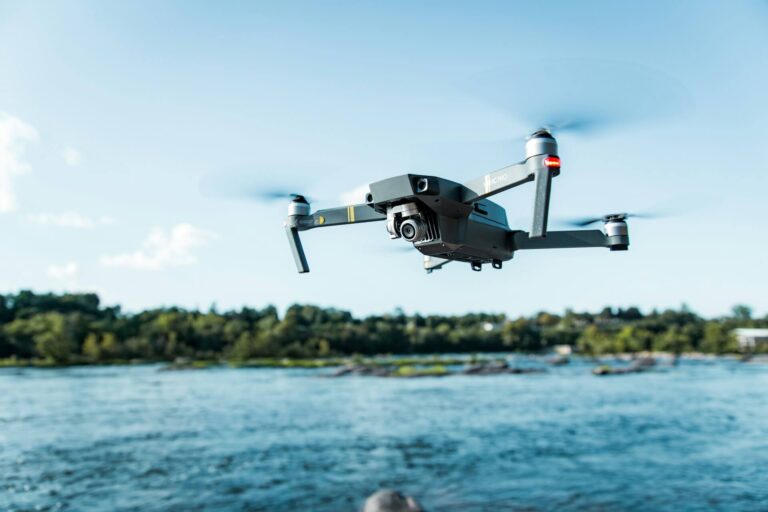The advent of modern technology has revolutionized the way we approach environmental research, as it provides us with advanced tools to observe, document, and preserve our ecosystems.
One such example is the incorporation of drones in research, which has changed the face of environmental research drastically.
With the drone’s ability to traverse remote regions not accessible by humans, researchers can study ecosystems that were previously unknown to the scientific community.
All these advancements are a testament to the fact that technology is playing a crucial role in preserving our precious environment.
The Evolution of Drones in Environmental Monitoring
These flying machines have not only revolutionized the way we observe and analyze our surroundings, but they have also made it possible to reach areas once deemed inaccessible or dangerous.
One company that has made significant strides in this field is iSky Films, a firm specializing in aerial imaging and data collection.
Using drones has helped researchers and scientists gather important information on environmental trends and patterns that were previously impossible to obtain.
With the increasing demand for effective and accurate monitoring, it’s clear that drones will continue to play a major role in the future of environmental research.
Drones in the Battle Against Climate Change
Climate change is a pressing issue that is affecting our planet and the way we live in more ways than one. But, in the fight against this global crisis, technology is proving to be a great ally.
One such technological innovation that is making waves in the battle against climate change is the use of drones.
Providing a new perspective and approach, drones can gather valuable data and conduct surveys that can help us better understand the ever-changing climate and ecosystem.
With such advancements, the cost and time required for environmental surveys and disaster response can be greatly reduced. The use of drones in our fight against climate change is an exciting development that holds immense promise for our planet’s future.
The Ethical and Legal Considerations of Drone Research
Drone technology has been rapidly advancing over the years, with many companies entering the market to utilize their capabilities. One such company is iSky Films, which specializes in aerial cinematography.
However, the use of drones for research purposes has brought forth many ethical and legal considerations. For instance, privacy concerns have been raised as drones are increasingly used for surveillance.
Additionally, the use of drones in public spaces can pose a safety risk. It is therefore important for researchers and companies to carefully consider the implications of their drone usage, and abide by the regulations set forth by governing bodies to ensure that their actions are both legally and ethically sound.
Enhancing Conservation Communication with Drone Videography
Effective conservation communication has never been more important than it is today. With environmental issues at the forefront of discussions and decisions around the world, organizations must use every tool at their disposal to raise awareness and inspire action.
One innovative way to enhance conservation communication is through drone videography. By capturing stunning aerial views of wildlife habitats and natural landscapes, drones can provide a unique perspective that traditional filming methods simply can’t match.
From highlighting the importance of biodiversity to advocating for sustainable living, drone videography offers a powerful way for conservationists to connect with people and inspire them to take action.
Future Frontiers: The Role of Drones in Ecological Research
As technological advancements continue to revolutionize the field of ecology, we’re witnessing an exciting synergy of drones and cutting-edge fields like artificial intelligence and machine learning.
This integration holds tremendous potential for exploring our planet’s natural world in ways we never thought possible. With aerial footage and data collection, drones have already provided immense value in ecological research.
But with the added ability to autonomously analyze, learn from, and interpret that data, the possibilities are endless. The future of environmental study has never looked so promising.
AI and Machine Learning for Data Analysis
This is where a company specializing in drone data services, comes in. Using cutting-edge technology, their team can analyze and make sense of the abundance of data captured by their drones at a speed and depth that was once impossible.
By harnessing the power of AI, researchers can now uncover subtle environmental trends, understand complex ecological interactions, and even predict the impact of human activities on the environment.
Innovations in Sensor Technology
Advancements in drone technology are enhancing our capacity to monitor and preserve environmental well-being.
Equipped with sensors that can detect pollutants, analyze microclimates, and evaluate coral reef health, we are gaining a deeper insight into our planet’s ecological systems.
The aerial data collection capability opens up boundless opportunities for fresh revelations and breakthroughs in environmental research.
Conclusion
This technology is more than just a visually stunning innovation; it’s also a powerful tool for environmental conservation.
With its various features such as affordability, non-intrusive, and safe ways to monitor and understand our planet, drone technology provides a new way to study the earth and its natural systems.


